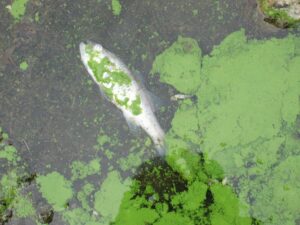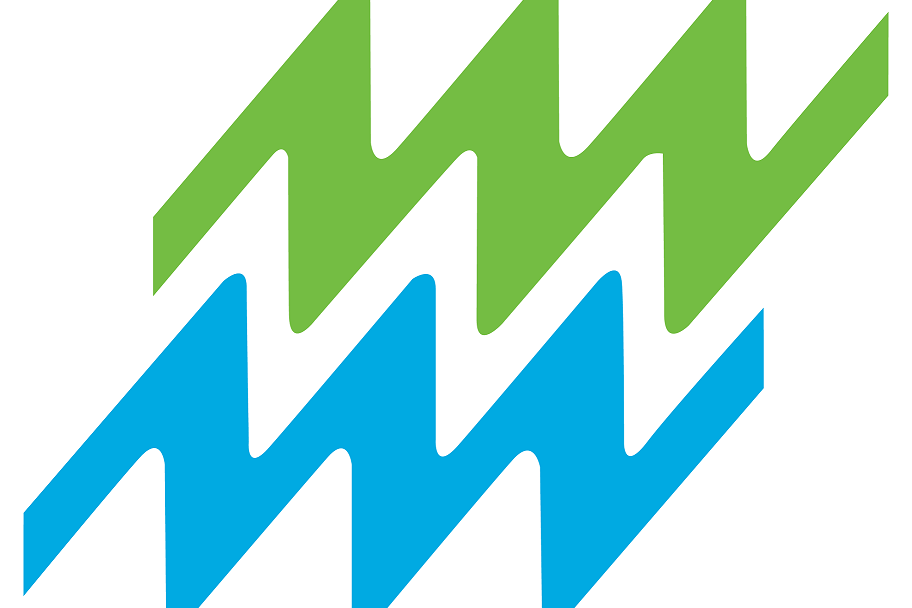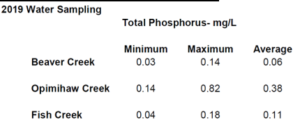The South Saskatchewan River Watershed Stewards (SSRWSI), with the help of Meewasin are once again sampling for phosphorous in creeks that flow into the South Saskatchewan river. High levels of phosphorous have been seen to cause algal blooms, which effects water quality and the whole ecosystem. Other undesirable effects of increased phosphorus include: decrease in biodiversity, decline in ecologically sensitive species, increase in invasive plant species, increase in biomass, increase in turbidity, anoxic conditions, costly treatment of potable water, unacceptable taste or odour, and water that may be injurious to health. (South Saskatchewan River Watershed Stewards)
Why is Phosphorous Important to Sample for?
Phosphorus is a nutrient that supports plants and animals in the aquatic food web but in excess can contribute to algal blooms and low concentrations of oxygen in water bodies. We are interested in measuring the phosphorus levels to better understand the concentrations and how they vary throughout the summer.
The green scum formed by dense algal blooms does not only look and smell bad, but can make water toxic to humans and fish, causing illness and—in some cases—death. When algae die,

they are decomposed by bacteria, which can remove oxygen from the water, occasionally killing fish. Algal blooms can also make water unfit for even recreational use. These tiny organisms can therefore have a huge impact on health, wildlife and economies that depend on fishing and tourism. (International Institute for Sustainable Development)
Algal blooms plague many bodies of water across North America due to excess amounts of phosphorus. Lake Winnipeg has been experiencing a steady increase in algal coverage over the last 30 years. It’s gone so far that in 2013 Lake Winnipeg was given the unfortunate distinction of being named the World’s Most Threatened Lake by the Global Nature Fund, mainly due to its algal bloom problem. (International Institute for Sustainable Development)
The Sampling Process

Samples were collected weekly throughout May and are now being done once a month until freeze up as part of a two-year project funded by Environment and Climate Change Canada. This year, a flow meter was purchased and that added data which will give us more context for our results in 2020.
Due to COVID-19 restrictions, only SSRWI and Meewasin, specifically Resource Management Officer – Renny Grilz, are able to take all of the samples, to avoid the need for sharing equipment between volunteers and because of restricted access to sites. Kerry Lowndes from SSRWI shares her experience with the project. “We are so glad to be able to continue our work through COVID-19 and are appreciative of Meewasin’s help every year. Our hope is to have school groups experience the process and spread stewardship spirit across the river basin”.
Renny Grilz from Meewasin expressed excitement for the future, “We are always happy to partner in research with great local organizations such as the SSRWSI around the River Valley. We are so appreciative of the work they are doing and we hope to spread the importance of these agencies and promote sustainable practices for years to come.” Says Renny Grilz from Meewasin
Results – Thus Far
Last year, there were four water samples collected in each of the Beaver, Opimihaw and Fish Creeks (see table below). The Prairie Provinces Water Board provides a summer guideline for Total Phosphorus (TP) for the South Saskatchewan River of 0.246 mg/L (2015). Most samples collected were below guideline levels.
In 2019 we did not have the ability to measure flow and cannot draw conclusions using Total Phosphorus (TP) levels alone. Sometimes, small volumes of water may be higher in nutrients, but contribute very little volume to the larger system. For example, low flow in Opimihaw Creek could contribute to higher concentrations of TP but little to no contribution of nutrients to the river.
Last year’s sampling results for July- October
Reference: PPWB. 2015. Review of the 1992 Interprovincial Water Quality Objective and Recommendations for Change. Technical Report #174. PPWB Committee on Water Quality. Regina, Saskatchewan. https://www.ppwb.ca/uploads/media/5c817677b4579/ppwb-report-b-review-of-the-interprov-wq-obj-recomm-for-change-en.pdf?v1
The Importance of Grasslands
High concentrations of phosphorus may result from poor agricultural practices, runoff from urban areas and lawns, leaking septic systems or discharges from sewage treatment plants. (United States Environmental Protection Agency)
Native or seeded grasslands, which tend to be deeper rooted, can slow water down and help with complete nutrient cycling. Annual cropland,  with its increased inputs, has the potential for more runoff allowing excess nutrients to enter lakes and rivers.
with its increased inputs, has the potential for more runoff allowing excess nutrients to enter lakes and rivers.
Grasslands are also a vital habitat for many species of birds, insects, plants, pollinators, and animals, and help with carbon storage, as well as reducing erosion.
Future Plans
Next May, we plan on sampling the same sites to compare levels of phosphorous and other general chemistry to ensure healthy ecosystems and wetlands. The goal is to ensure harmful nutrients aren’t overtaking the natural spaces, changing the water and effecting the whole ecosystem’ biodiversity, species, biomass, turbidity, anoxic conditions, making costly treatment of potable water, unacceptable taste or odour, and water that may be injurious to health.
Carrot River, North Sask River, South Sask River and Swift Current Creek watershed stewardship groups received funding to do phosphorus testing on lakes and creeks that enter the Saskatchewan River system.
Thank you to the South Saskatchewan River Watershed Stewards for partnering with this project!
References
International Institute for Sustainable Development. What Are Algal Blooms and Why Do They Matter? n.d. 21 July 2020. <. https://www.iisd.org/library/what-are-algal-blooms-and-why-do-they-matter>.
South Saskatchewan River Watershed Stewards. “Phosphorus Testing in Lakes and Rivers that Flow Into the Saskatchewan River.” Environment and Climate Change Canada, 2019-2020. 1.
United States Environmental Protection Agency. National Aquatic Resource Surveys. n.d. 22 July 2020.





